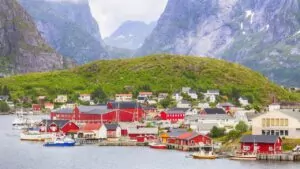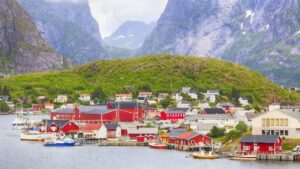Year after year, Nordic countries consistently dominate the top positions in global happiness rankings, such as the World Happiness Report.
This phenomenon has captured the attention of researchers, policymakers, and the general public alike, prompting many to question what sets these nations apart from the rest of the world.
Denmark, Finland, Iceland, Norway, and Sweden, collectively known as the Nordic countries, have successfully cultivated societies that prioritize the well-being of their citizens.
In this article, we will explore the various factors that contribute to the exceptional happiness levels in these countries, including their strong social support systems, emphasis on work-life balance, access to quality healthcare and education, trust in government and fellow citizens, and commitment to income equality. By examining the unique features of Nordic societies, we can gain valuable insights into what it takes to foster a content and thriving population, and perhaps learn lessons that can be applied in other parts of the world.
Read More: The Power of Awe
Scandinavia Always Ranks in the Top 10 Happiest
Since 2013, the World Happiness Report (WHR) has consistently ranked the five Nordic countries – Finland, Denmark, Norway, Sweden, and Iceland – among the top ten happiest countries every year until 2024.
The Pursuit of Happiness
However, what is it that sets Nordic citizens apart and makes them particularly content with their lives? According to data from the World Happiness Report, the happiness of a society is closely tied to the presence of strong institutions, generous welfare benefits, and minimal corruption, among various other factors.
How is Happiness Defined?
Nevertheless, quantifying happiness into a numerical ranking proves to be a challenging task. However, by examining the factors highlighted in the World Happiness report, we may gain insights from the Nordic countries.
146 Countries, Finland Leads
In the latest ranking, which is updated every year, a total of 146 countries were analyzed. According to this study, Finland emerged as the happiest country on the planet, scoring an impressive 7,741 points.
Santa’s Home
It is quite clear that the nation which Santa Claus considers his home is at the forefront of the ranking for the happiest country.
7 Years on Top
Once again, the Nordic country has claimed this prestigious award for the seventh year in a row. Denmark secured second place with a total of 7,583 points.
Other Nordic Countries
Iceland secured the third spot in the 2024 report with an impressive 7,525 points, while Sweden claimed the fourth position with a score of 7,344. On the other hand, Norway didn’t quite keep up with its Nordic counterparts this year, landing in 7th place with 7,302 points.
How is Happiness Quantified?
However, determining the happiest country in the world can be quite a challenge. Could you please provide information on the criteria and elements that are considered?
Six Variables
Six universally accepted indicators are utilized to compile the World Happiness Report: GDP per capita, social support, sense of corruption, freedom to make life decisions, generosity, and healthy life expectancy.
Opinion Polls and Data
The primary source of data for the study comes from globally recognized opinion polling businesses like Gallup, who gather data and viewpoints from all around the world.
Helpful Report for Countries to Improve
Indeed, the World Happiness Report provides countries with a valuable tool to assess areas for improvement in order to enhance the overall happiness of their citizens, as highlighted by the report.
Happiness is Possible in Times of Catastrophe
For a number of years, the reports included references to worldwide emergencies such as the pandemic. While statistics on happiness around the world declined during the pandemic, social support and solidarity increased dramatically.
Too Cold to be Happy?
When it comes to Nordic countries, it is often believed that cold weather does not contribute to people’s happiness. However, the actual situation is quite contrasting.
Weather Doesn’t Affect Happiness
Experts from the World Happiness Report have found that people tend to adapt to weather conditions, suggesting that it may not have a significant impact on the overall happiness levels in Nordic countries.
What About Lack of Light?
In the winter, the Nordic countries experience shorter days, which has led to a common misconception about high suicide rates in these regions. Despite experiencing relatively high suicide rates in the 1970s and 1980s, there has been a significant decline in these rates since then. Currently, the suicide rates are similar to the European average, as reported by Eurostat.
Education, Health, Freedom and Equality
The Nordic countries are known for their exceptional educational systems, outstanding social services, strong commitment to freedom and equality, and the generosity of their citizens. These factors have consistently placed them among the top 10 countries in terms of happiness rankings.
World Happiness Report: 1-10
The 2024 World Happiness Report is dominated by Finland and Denmark, with Iceland, Sweden, Israel, the Netherlands, Norway, Luxembourg, Switzerland, and Australia following closely behind.
World Happiness Report: 11-20
Between positions 11 and 20, we can find a diverse range of countries including New Zealand, Costa Rica, Kuwait, Austria, Canada, Belgium, Ireland, Czechia, Lithuania, and the UK.
According to the World Happiness Report, Saddest Countries
On the other hand, the 2024 report reveals that Lesotho, Lebanon, and Afghanistan are ranked as the least happy places.





























